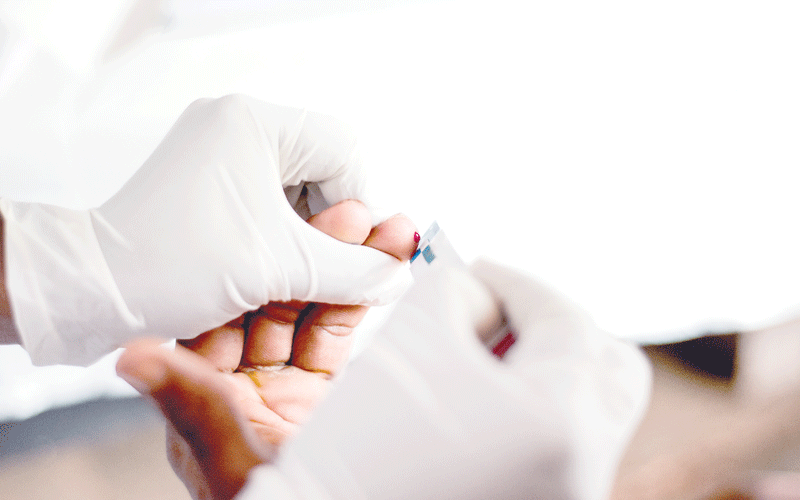Shrinking donor funding could reverse gains against Aids

Kenya’s reclassification to lower middle-income status in July 2015 will see it miss out on vital money for critical programmes including HIV interventions, forcing government to look for alternative sources
As we mark the 31st anniversary of World Aids Day, Kenya has made remarkable progress towards achievement of the 90-90-90 global targets aimed at ensuring that 90 per cent of all people living with HIV know their status; 90 per cent of those infected are put under antiretroviral therapy; and 90 per cent of those under Antiretroviral Therapy (ART) have viral suppression by 2030.
Currently, an estimated 89 per cent of those with HIV know their status and 69 per cent of those infected are under ART.
The total incidences of HIV new infections have declined from 66,000 in 2010 to 46,000 in 2018, leaving the country with a national prevalence of 4.7 per cent according to recently released data by the United Nations Programme on HIV/AIDS (UNAids).
However, the solid gains made in fighting the epidemic risk getting lost if the government does not adopt mechanisms to finance HIV programmes amid declining donor funding.
Kenya heavily relies on external financial sources at 70 per cent according to data from Kenya Aids Response Progress Report 2018 by the Ministry of Health.
United States is the biggest donor, contributing over half of all donor funding through the President’s Emergency Plan For AIDS Relief (Pepfar). Other major donors are the Global Fund and UN agencies.
Rebased economy
Regina Ombam, Deputy Director HIV Investments, National Aids Control Council (NACC), says Global Fund works through a co-financing mechanism, where government contributes money to the kitty aimed at accelerating efforts to end malaria, HIV and tuberculosis. 
The fund then donates money to countries drawing from the larger pool. Kenya has pledged to make a contribution of Sh600m from 2020-2022.
Domestic funding from both national and county governments accounts for 31 per cent. Even though there has been an increase in domestic funding from 17 per cent from 2013, the gap is widening since the country rebased its economy in 2014.
The reclassification of the economy into a lower middle-income country has led to decreased donor support towards HIV programmes.
The rebasing has come with dwindling resources as donors withdraw their support to direct it to needier nations. “Besides leading to decreased donor funding, rebasing of the economy means there are certain concessions we cannot continue enjoying.
One of those benefits to be withdrawn is procuring drugs at a subsidised cost. Rebasing means that as a country we have to buy drugs at the market price,” says Ombam.
Although the government has increasedlfunding towards HIV programmes, there was still a financial shortfall of Sh170m in 2018/2019.
In 2016/17, the government incurred a total HIV expenditure of Sh121b as cost of services towards achievement of the UNAids 90-90-90 goals, further increased financial demands of HIV programmes.
Amidst this changing financial landscape, experts are calling for swift action in allocating additional domestic resources to ensure sustainability of HIV interventions.
They include prevention, testing, and provision of antiretroviral drugs. The ideal situation according to Kenya Aids Response Progress Report 2018 is to increase the domestic funding to 50 per cent.
“The government through the Ministry of Health has formed a taskforce focusing solely on looking for alternatives to ensure smooth running of services even after the cut in donor funding.
Under the taskforce being coordinated by the NACC, development partners and civil societies, Treasury and Health ministries have come together to look at how the transition will affect health programmes,” says Ombam.
One of the interventions NACC is taking is maximising efficiency of the available programmes for increased value.
The state corporation, mandated with mobilising funds for such programmes, is focusing on specific populations to achieve more results with limited resources. Prevention of the epidemic is the top area of intervention.
“What we are doing under prevention is tailoring interventions that target specific populations. For instance, statistics show that youths aged 15-24 accounted for a third of the 52,800 new infections in 2018.
Our prevention programmes, therefore, focus on such groups to ensure that even with little resources we are able to achieve much,” adds Ombam.
New streams
The council is also creating new revenue streams to cover the funding shortfall through creating synergies with other sectors not directly involved in health.
Ombam says the council has been working closely with infrastructure sector to ensure that contracts factor in aspects of HIV mitigation. “We hope to raise money by creating synergies with other sectors such as infrastructure.
We are already engaging with the infrastructure sector so that as they construct roads they not only look at it from from engineering, but also a social perspective,” she says.
The counties are also stepping in to boost the HIV domestic funding demands. For the 2018/ 2019 financial year, counties contributed Sh210.4 million towards HIV programmes. All the 47 counties have developed strategic plans to fight the epidemic.
In the absence of these interventions, the country risks lagging behind in achieving the global goals and lose the gains made in the fight against HIV.
If not addressed the financial shortfall will also hinder the country from achieving Universal Health Coverage, one of the pillars of Big Four Agenda.
“Universal Health Coverage covers health in totality and that includes HIV programmes. It’s concerned with ensuring healthcare is affordable, of high quality and accessible to all,” says Ombam.
The country will not achieve UHC if all the 1.6 million people living with HIV are not enrolled and sustained under ART. Presently, 1.2 million people living with HIV are enrolled under ART.






